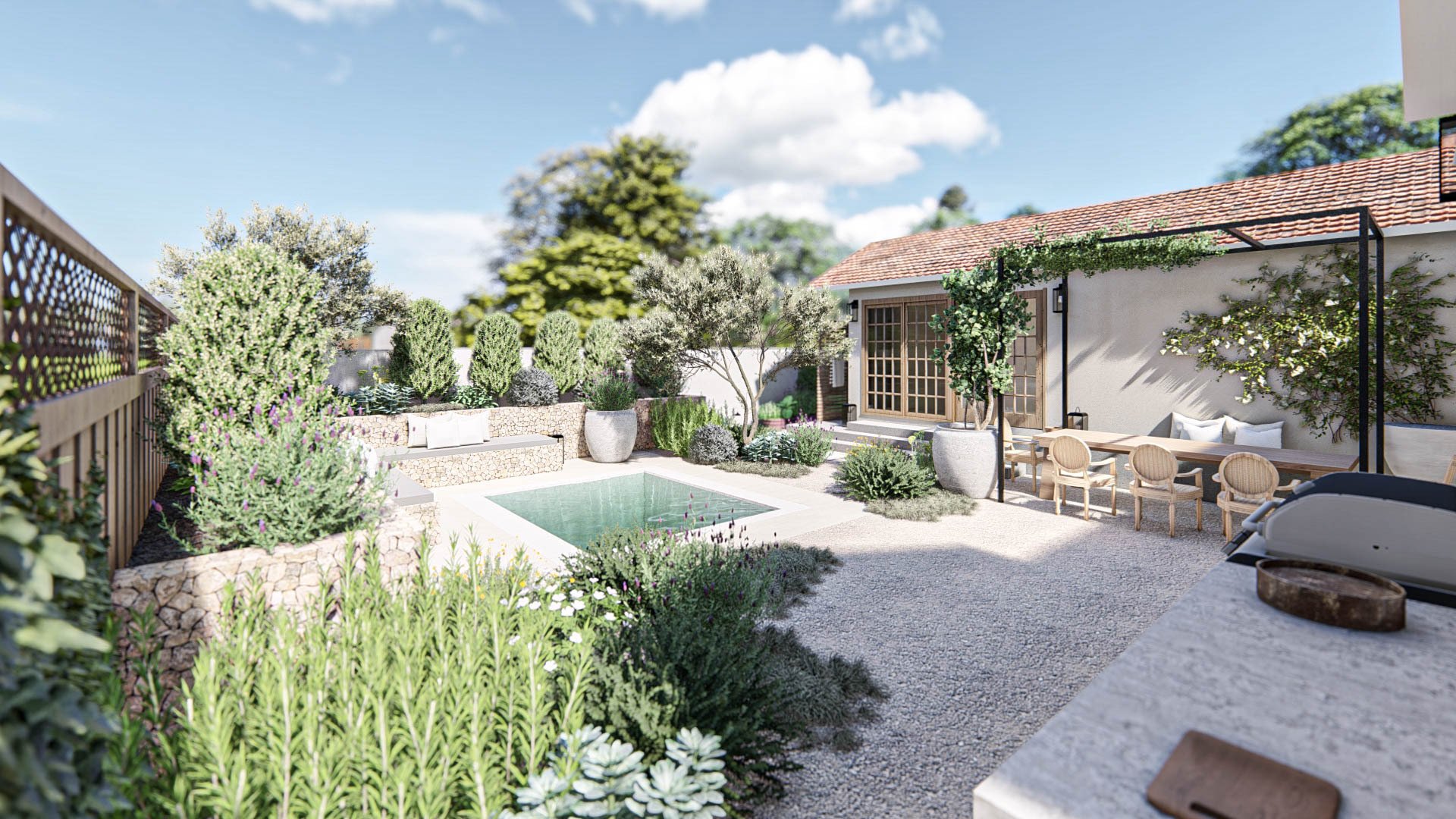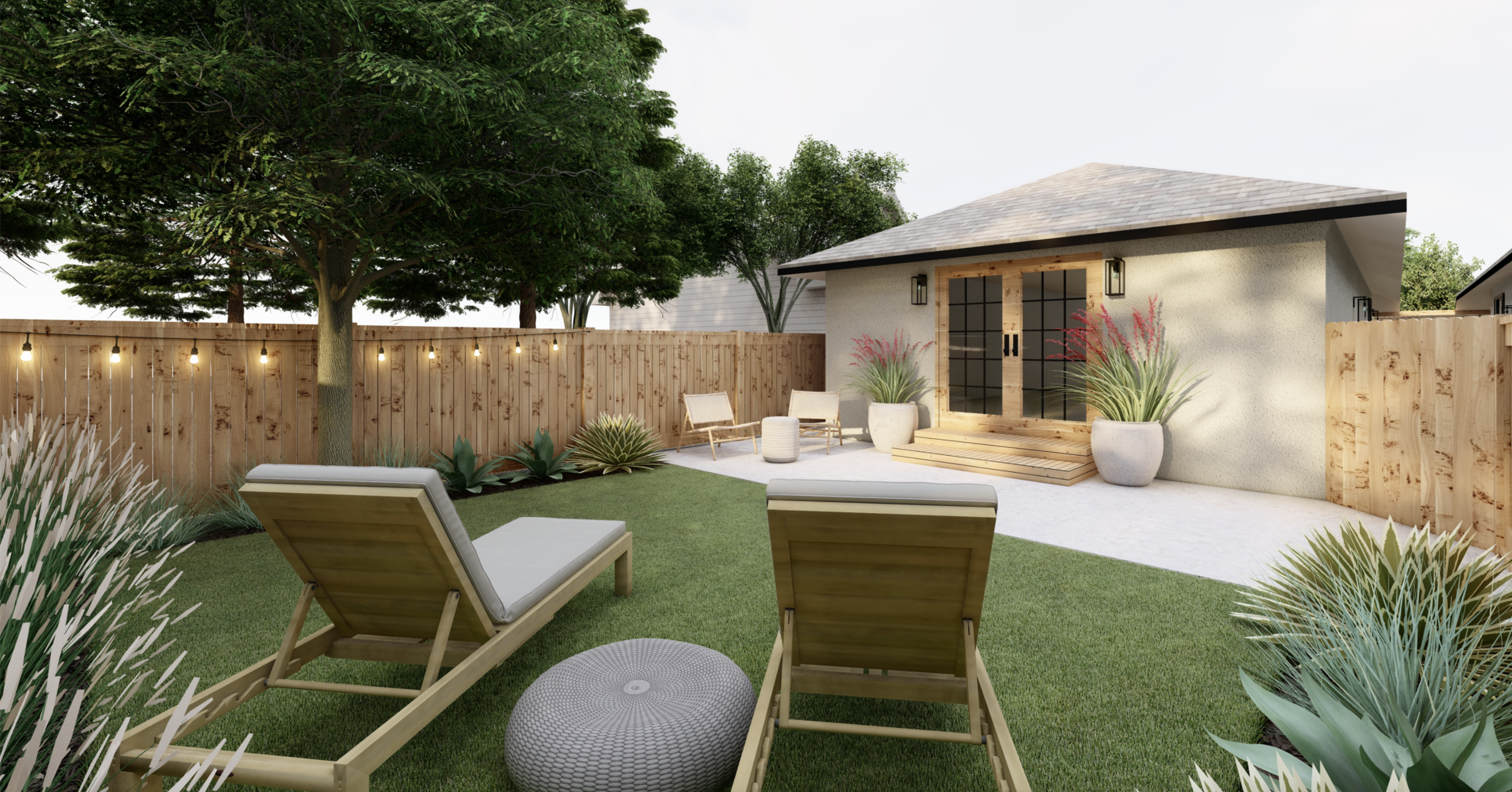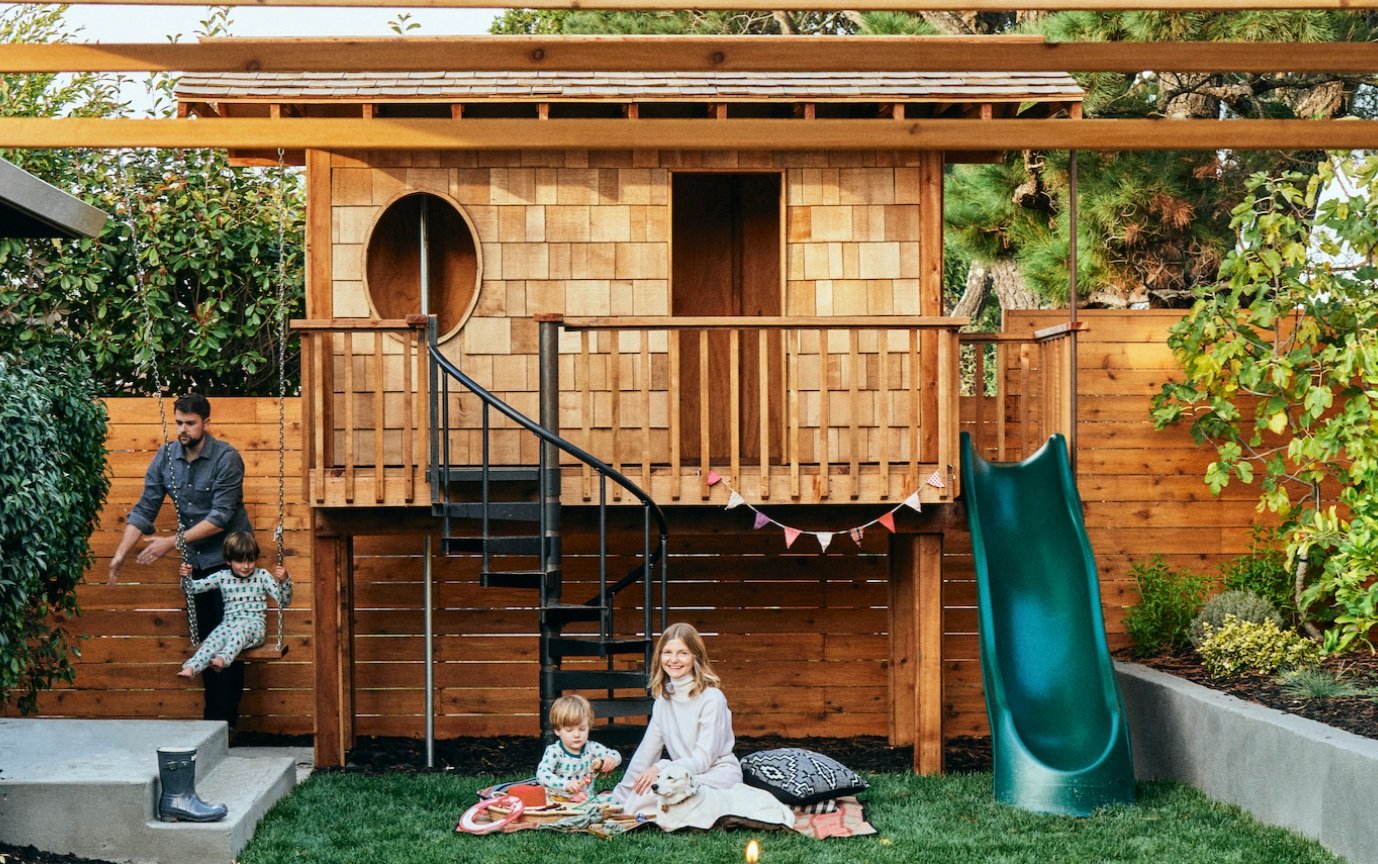Hooray, your design is ready! Next steps: find a contractor and get a cost estimate.
Here, we teach you how to read a landscaping estimate to ensure that you understand the scope of work and exactly what you’re paying for when working with a Yardzen Pro Netowrk contractor.
As part of any Yardzen package, we offer a free bid review service, and we are always happy to assess any bid you receive for best practices and fair market values.
What is a cost estimate?
A cost estimate, or “bid”, is a document a landscape contractor provides to their client before installation can begin.
Most estimates list each item or task required to install a landscape design. Line items in these estimates usually include a quantity, unit price, and total estimated cost, so the client can understand the individual cost of every component of their design.
Some cost estimates are more general, and do not include pricing per line item, but this is less common.
What line items will I find in an estimate?
Estimates typically include line items for each permanent feature of your Yardzen design. This includes planting, structures (decks, pergolas, built-in planters or seating), paving, fire pits, outdoor kitchens, sport courts, hot tubs, or other similar features.
Estimates are organized into themes to make them easier to understand. Some separate planting expenses from hardscape expenses, others list items by which part of the property they relate to (front yard, back yard, side yards).
In addition to design elements, estimates include features that are required to make your design possible: irrigation, drainage, demolition, waste disposal, grading, soil preparation, and more.
Costs related to the contractor’s work are also included: site setup and cleanup, equipment provision, portable restrooms, and office administrative fees.
Estimates do not include furniture, decorative items, or other elements that don’t require professional installation. Such items are sourced and purchased directly by clients.
Does an estimate include more than costs and quantities?
Yes. Estimates also provide descriptions of the work to be done.
For example, an estimate for a concrete patio will include the area, cost per square foot and total estimated cost of the concrete, but it will also briefly describe the base beneath the concrete, the depth of concrete to be poured, the placement of rebar within the concrete, the surface finish of the concrete, and the strength standard to be met by the finished patio.
Interpreting estimates
Estimates use concise text typical of construction documents. For example, a concrete patio could be described like this:
Concrete: approx. 290 SQF
Broom finish concrete
18” rebar on center
4” slab 2500 psi concrete
The terminology and level of detail can be overwhelming to some, but you can always contact your contractor or Yardzen if you need help understanding your bid.
What if I’m not comfortable reviewing an estimate?
We encourage all clients to take a stab at reviewing their estimate, as it prepares them to be a collaborative partner to their contractor.
This being said, Yardzen offers a free bid review service, and is happy to assess any bid you receive for best practices and fair market values.
How does a contractor prepare an estimate?
Contractors begin a project with a visit to the site and a review of the proposed design. They then prepare and share an estimate with the client, using their professional expertise to determine material costs and labor hours.
Do estimates vary from contractor to contractor?
Yes. While estimates all provide similar information, some are more precise, others more general. Each contractor has their own preferred estimate format.
A lack of detail doesn't necessarily indicate an unprofessional estimate. Some contractors prefer to discuss details in person or over phone/email, or they include the minimal amount of information to reduce administrative work and dedicate more time to building.This is especially true on smaller scale projects.
The actual costs listed in an estimate also vary from one contractor to the next. This is part of why it is good to be a little flexible when approaching a project budget.
How precise is an estimate?
Prices and quantities in an estimate are… estimated. A contractor takes site measurements to make their estimates as accurate as possible, but the quantities and expected costs listed in an estimate may ultimately differ from the final quantities and costs of an installed landscape.
What if the estimate total exceeds my budget?
Yardzen closely tracks budget throughout the design process, but many variables affect installation costs, from site complexity to access to materials costs. These variables can push or pull designs out of sync with budget targets when contractors develop their estimates.
Fortunately, it’s easy - and very common - for clients and contractors to work together to develop design adjustments to reduce project costs to hit budget targets.
Clients can also reduce budget without making changes to the design layout. Choosing more cost-effective hardscape materials and purchasing plants at smaller sizes are common practices to reduce project costs.
How can I make changes to my design?
Beyond cost reduction, clients and contractors commonly make design changes for a variety of reasons - there may be previously unforeseen circumstances like difficult access or rocky soils, or a client may simply want to tweak a few things based on the contractor’s advice.
When changes are desired, it’s common for contractors to simply adjust their work plan to incorporate the changes, especially on smaller projects. When changes need to be documented on paper, contractors can make editorial marks on the client’s CAD plans and the Yardzen team will update the CAD free of charge.
After determining design adjustments with the client, the contractor will provide an updated estimate. Revised drafts of estimates often indicate items that have been removed, so the specific savings from each omitted item is readily visible.
What happens once we agree on an estimate?
When the client and contractor finalize design adjustments and land on a plan that works for everyone, the contractor then provides a finalized estimate or contract to sign. By signing the final estimate or contract, the client officially hires the contractor for the installation.
With contract signed, the client and contractor then schedule a date to begin installation.
What if the final installed price differs from the estimated price?
The type of contract you have determines how price differences are handled.
Under a “Time and Materials” contract, the estimated price is not final, and the client agrees to pay whatever the final cost may be after installation, using agreed-upon rates for time spent and materials used.
“T and M” contracts include “allowances” for items where the cost cannot be easily estimated before installation. The exact cost of pavers, for example, could be an allowance - the pre-installation estimate would take a best guess at paver price, but the client would pay whatever the final paver cost ends up being after installation.
A fixed price contract agrees to a fixed final price for the entire project before installation begins. Under fixed price contracts, a change to the project scope during installation gets documented through a “change order”, which essentially adjusts the contract to set a new fixed price that incorporates the scope change. It’s common for contractors to charge a fee to process change orders, so they are best avoided.
In practice, small changes are often accommodated without the hassle of a change order - in this case contractors just tack extra expenses onto the final project invoice.
On occasion, you may find fixed price items and time and materials and allowance items within a single contract. Counterintuitively, this can lead to a simpler overall contract experience, depending on the project.
Parting Thoughts
Learning to understand estimates expands your understanding of the work required to install your project, and will allow you to work more productively with your contractor. It may take a little time to get comfortable navigating estimates, but the time spent is worthwhile, and leads to more successful project outcomes.










































































